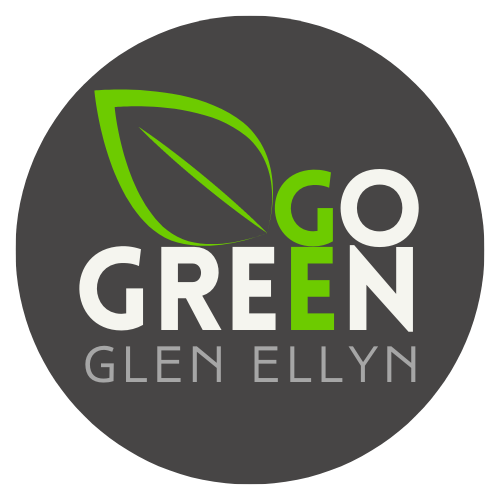
Help make Glen Ellyn greener, one (native) plant at a time!
Did you know that over 90% of land in the U.S. is privately owned? Making your own corner of the world - your yard, or outdoor containers - more environmentally friendly can have huge impacts!
Native Plants are one of our favorite ways to “start in your yard.”
-

Native plants support our ecosystem
pictured: purple coneflower “Echinacea purpurea”
Natives have flowers that local species rely on to survive. They provide a food source for birds, bees and butterflies that are native to our area 🐝 By planting native plants or native cultivars, you’re helping create a little conservation station right where you live.
-

Native plants have thrived happily in our area for thousands of years
pictured: blue lobelia, black eyed susan, and red cardinal flower
Native perennials are beneficial as they know and love our weather, our soil as well as our local animals and pollinators. They put out deep roots that help them survive drought, and prevent erosion. These deep roots help the soil by improving infiltration, increasing carbon sequestration which benefits other plants and organisms.
-

Native plants require little maintenance
pictured: wild bergamot, aka Monarda or “bee balm”
Native plants, once established, are easy to care for. They require less water due to their deep roots and no fertilizer or chemicals. This is because they have adapted to our weird Illinois weather! Native plants also save money in the long run as they keep popping up, year after year! That’s a win-win-win!
How do I get started with Native Plants?
Decide where you might want to plant and consider the conditions of the area (sun/shade, wet/dry soil).
Decide if you want to do it yourself, get some help, or get a lot of help :)
If you’re the DIY type…The best way to start AND to get the most bio-bang for your buck is to choose a keystone plant, shrub or tree. Homegrown National Park has a list of plants (and yes, they can be put in containers!) and shrubs/trees that are considered keystone for our area. There are other resources listed below. Consider height (some native flowers are VERY tall), and your sun/shade as well as dry/wet soil conditions.
If you’d like some guidance and possibly yard certification…The Conservation Foundation’s Conservation@Home program is a wonderful local resource. They will visit your home FOR FREE! and provide advice on what will grow best in your yard. Once you've installed some plants, you can have your yard certified for using earth-conscious choices in landscaping. Both Jac and Karin have had their yards certified. Learn more about this program here, and you can show off your sign to help spread the word!
If you don’t have a green thumb or lack the time…First, native plants are a lot more “set and forget" than annuals (once established), but there are landscapers who will help nurture your native vision, and also utilize greener means of maintaining your garden and lawn. Here is a list from Wild Ones of DuPage to get you started. Jac has also worked with Kori and Bryan Kasper from Branch Gardens and was really happy with the plants (and even more happy for the help)!
The saying with native plants is “first year sleep, second year creep, third year leap!” This means that once planted, natives typically take 2-3 years to really blossom. But since they don’t require much maintenance, you can generally sit back and watch them grow! In our experience, we recommend starting small with a few varieties to see how you like them (and how the plants like their new spaces).
Nearby (or nearly nearby) Native Plant Nurseries!
Possibility Place Nursery. With a very resourceful website, this is the nursery where the GE Park District sources their native plants for their fall annual sale (and for their beautiful gardens). You can order plants through the mail, visit their retail shop in Monee (limited times), or look for their partnerships with nonprofits like the Conservation Foundation.
Prairie Wind Native Plants. Run by our Go Green Glen Ellyn friend, Bruce Blake, who is a wealth of knowledge about local native species!
Prairie Moon Native plants. Based out of MN, they are considered one of the best sources for native Midwestern plants.
Here is a great list of native plant nurseries from Wild Ones
Want to learn EVEN MORE about Native Plants? May we suggest:
Homegrown National Park book by Doug Tallamy
Illinois Native Plant list from the IL Dept of Natural Resources
Morton Arboretum has an excellent database of plants, trees and shrubs.
University of Illinois College of Agricultural, Consumer & Environmental Sciences (aka Illinois Extension) is a rich resource of information
Wild Ones are dedicated to education about native plants here in DuPage
DuPage Monarchs where you can learn how to create a Monarch waystation in your own backyard

